Just when you may think you’re done with spring allergies, summer allergies come along, causing more discomfort. Summer allergies tend to begin in June and end in September, with symptoms peaking in June and July.1 Timing may vary depending on where you live, as the climate can affect the allergens that trigger your summer allergy symptoms. Read on to learn what may be causing your summer allergies and how to get relief.
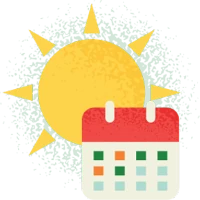
Summer Allergies 101
Summer is a key allergy time for some people because we’re outside more.
Summer allergies usually begin in June and end in September, with symptoms peaking in June and July.
Common symptoms include:
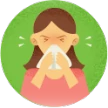
Sneezing

Itchy nose

Red, itchy, watery eyes

Congestion
Triggers for summer allergy symptoms include:

Grass pollen

Ragweed pollen

Fruits and veggies
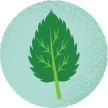
Nettle

Tree pollen

Mold
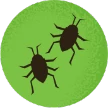
Insect bites

Mugwort
What Causes Summer Allergies?
During the long, sunny days of summer, more people head outdoors to garden, entertain in the backyard, and enjoy camping, hiking, and biking adventures. Additionally, common allergens such as mold and ragweed pollen are active this time of year. The following outdoor sources can trigger summer allergies.
Tree pollen
Tree pollens thrive when nights are cool and days are warm. Depending on your geographical location and the number and types of trees nearby, tree pollens may be especially high during the summer months.2
Grass pollen
Grasses, which grow in almost every geographical location, are the most common cause of summer allergies.3 Visit our American Grass Pollen Guide to learn more about grass allergies.
Mold
Outdoor molds can also cause summer allergies. Mold is sensitive to weather conditions and may increase in concentration depending on the weather.4 Certain mold spores are more likely to spread in dry, windy weather, while others thrive in high humidity, such as fog or dew.
Ragweed
Ragweed is one of the most common causes of allergies in late summer and into fall. This blooming plant grows in most parts of the United States. An individual plant can produce as many as 1 billion pollen grains, which are tiny, incredibly lightweight, and spread easily. Ragweed begins to release pollen in August and continues through November.5
Mugwort
This perennial plant is one of the more common allergens found toward the end of summer into early fall.6 Mugwort contains proteins that may result in an allergic reaction among pollen-sensitized people.
Nettle
This annual and perennial plant with stinging hairs on its flowers and leaves can cause allergic reactions when people inhale the pollen or come into contact with the plant.7
Which Plant Pollens Cause the Most Summer Allergies
Weeds:
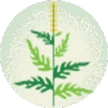
Ragweed

Lamb’s quarter

Sagebrush
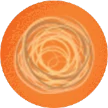
Tumbleweed
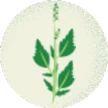
Pigweed
Grasses:

Timothy
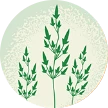
Kentucky blue

Johnson

Rye

Fescue

Bermuda

Bahia
Summer Fruits and Veggies
Some people are sensitive not only to pollens but also to certain foods with similar proteins as those found in common allergens, such as grasses and weeds. If you experience a short-term sensation of tingling lips, swelling of the mouth, or a scratchy throat when you eat a raw summer fruit or vegetable, you may have this type of allergy known as Pollen Food Allergy Syndrome, or Oral Allergy Syndrome. If you’re concerned about your symptoms or experience food allergies that extend beyond your mouth, contact your healthcare provider to rule out the possibility of a more serious food allergy.6
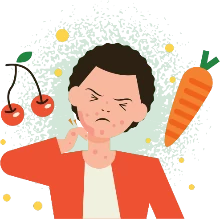
Pollen Food Allergy Syndrome
In some allergy sufferers, the immune system recognizes cross-reacting allergens found in both pollen and raw fruits, vegetables, and tree nuts.
This condition is Pollen Food Allergy Syndrome (PFAS) or Oral Allergy Syndrome (OAS)
The body responds with a mild allergic response, usually:

Itchy mouth
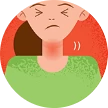
Scratchy throat

Swelling of the lips, mouth, tongue, and throat
Sometimes people experience:
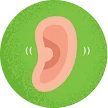
Itchy ears

Hives on the mouth
People with an allergy to grass pollen may react to:

Celery

Melons

Oranges

Peaches

Tomatoes
People with an allergy to ragweed pollen may react to:

Bananas

Cucumbers

Melons
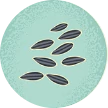
Sunflower seeds

Zucchini
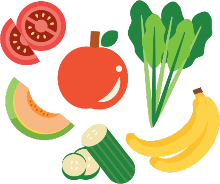
Not everyone with pollen allergies reacts to fresh fruits and raw veggies.
Most people with PFAS experience short-term symptoms and don’t require treatment.

But people with reactions to fresh fruits or raw veggies with symptoms that go beyond the mouth area may be at risk for anaphylaxis.
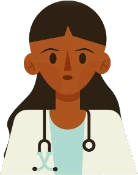
Talk to your doctor or allergist if you have questions about PFAS or any allergy symptoms.
What are Some Common Summer Allergy symptoms?
Allergy symptoms resulting from pollens and other allergens can mimic the symptoms of the common cold: itchy, watery eyes, sneezing, runny nose, and nasal congestion.
Here are a few other ways to tell which one you have. Allergies don’t typically include fever, while a cold can include a mild one, especially in kids. Allergies tend to last as long as you’re exposed to the allergen, while colds tend to last no longer than one to two weeks.9 Some people may only experience symptoms during one season, while others may react to allergens throughout the year.10 Still not sure whether you have allergies or a cold? Read more to find out.
Several factors impact the severity of an allergic reaction to pollen, including how much pollen a plant species emits into the air, how long your exposure is, and whether the pollen is more or less likely to cause an allergenic response. If you’re allergic to multiple pollens or allergens, you may have more severe allergy symptoms.
Additionally, allergic symptoms will vary depending on which pollens and other allergens are common to your geographic area. Plants produce different levels of pollen depending on climate conditions such as temperature and rainfall. And while allergy seasons tend to remain predictable, unexpected weather changes can increase or decrease the usual pollen season, also affecting symptoms.11 Learn more about pollen allergies and common symptoms of an allergy to pollen here.
How to Manage Summer Allergies

Limit contact with outdoor allergens.
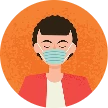
Wear a face covering and long-sleeved clothing.
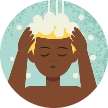
Shower after going outdoors.

Take an antihistamine.

Speak to your healthcare provider about treatment options.
Fortunately, you can take preventive measures to improve allergies.
Watch the allergy forecast
Get to know the climate conditions such as warm weather, rainfall, or even cold weather (for mold) that encourage pollens to thrive in your geographic area. Check the weather forecast and know what types of weather can make allergy symptoms worse. Also, check the pollen count on the ZYRTEC® AllergyCast® app. The app not only helps you forecast pollen counts but offers tips to help you manage your allergy symptoms.
Stay inside when pollen counts are highest
Keep the doors and windows closed when pollen is at its peak in the evening during early summer and in the morning during late summer. Take a shower and put on fresh clothes after working or playing outside.
Cover up to protect yourself from pollen
Wear a face covering to prevent pollen from getting into your mouth, nose, and eyes, and when mowing the lawn or gardening.12 Wear long sleeves or pants if you will have physical contact with allergens such as grass or ragweed.
Keep indoor air clean
Rather than keeping windows open to cool down your home or car, use the air conditioning to limit the amount of pollen that gets indoors. Keep your home clean by vacuuming often and running a HEPA air filter to catch any allergens. If you’re not filtering your air, you may have poorer air quality inside your home than outside.13
Relieve summer allergy symptoms with an antihistamine
If you can’t avoid pollen during the summer, over-the-counter allergy medicines may help relieve your allergy symptoms. These medications stop the body from producing histamine, the compound that causes allergy symptoms.14
Conclusion
Summertime allergies may be a hassle, but with knowledge, preparation, and treatment, they don’t have to ruin your warm-weather fun.
References
https://www.aaaai.org/conditions-and-treatments/library/allergy-library/ragweed
https://acaai.org/allergies/types/food-allergies/types-food-allergy/oral-allergy-syndrome
Links to other parties’ articles and websites are provided for convenience only. Kenvue is not responsible for their content.

